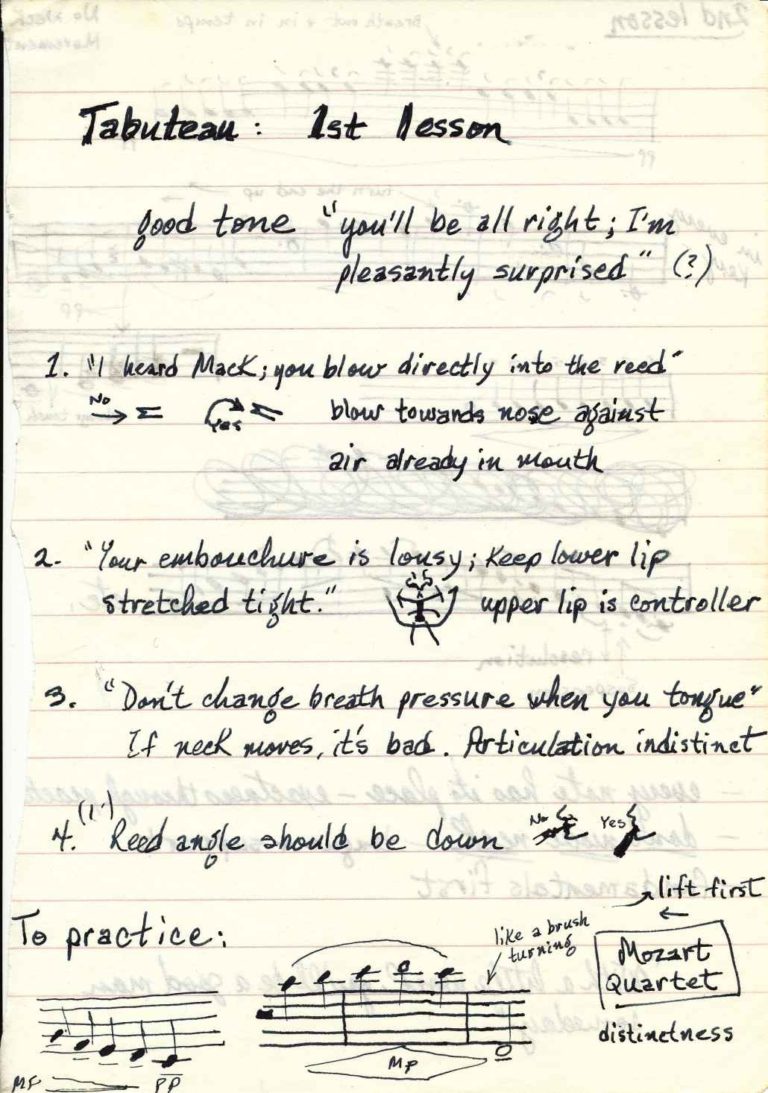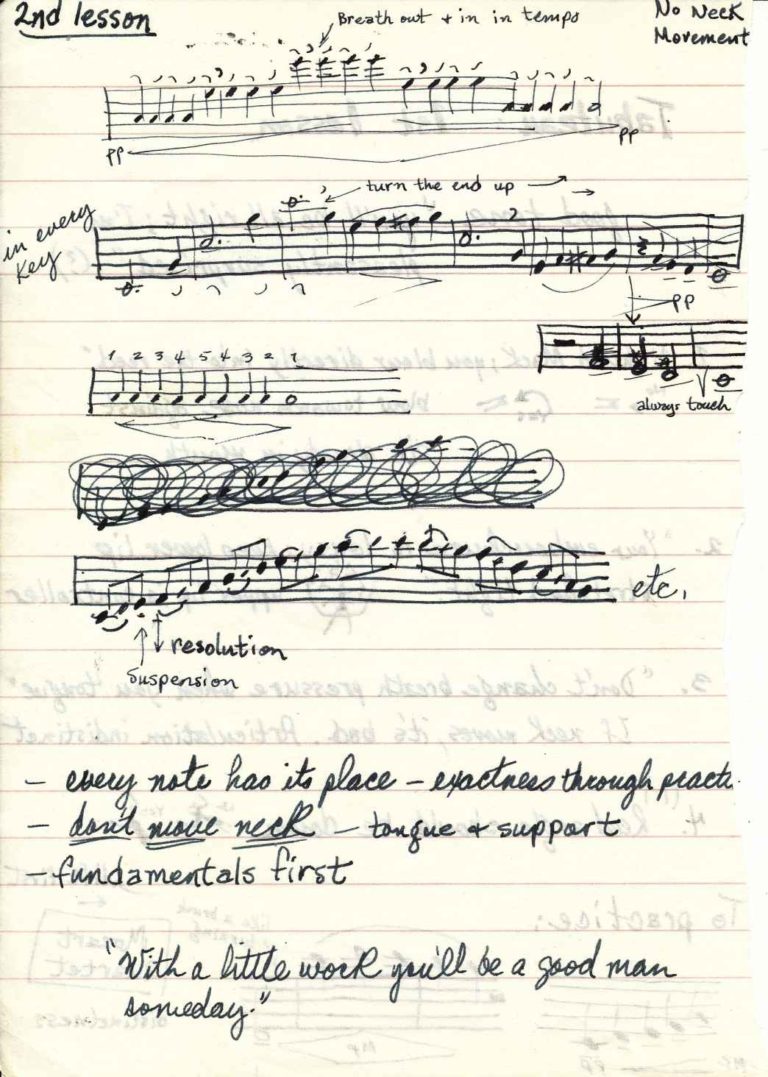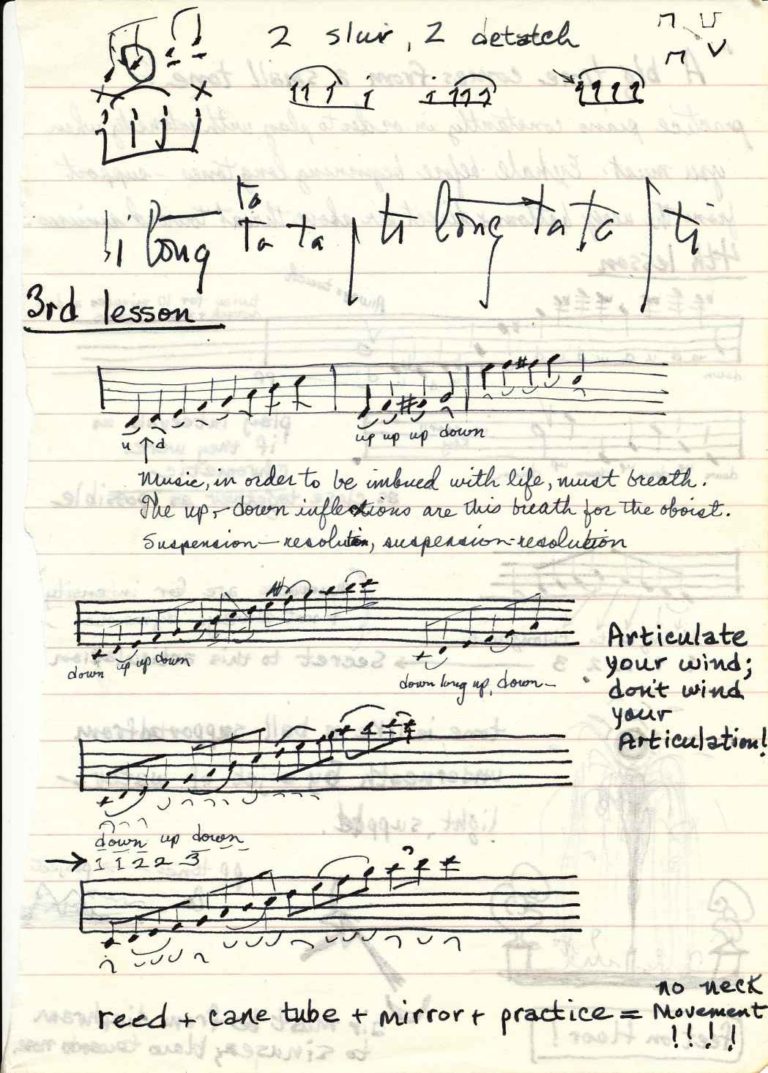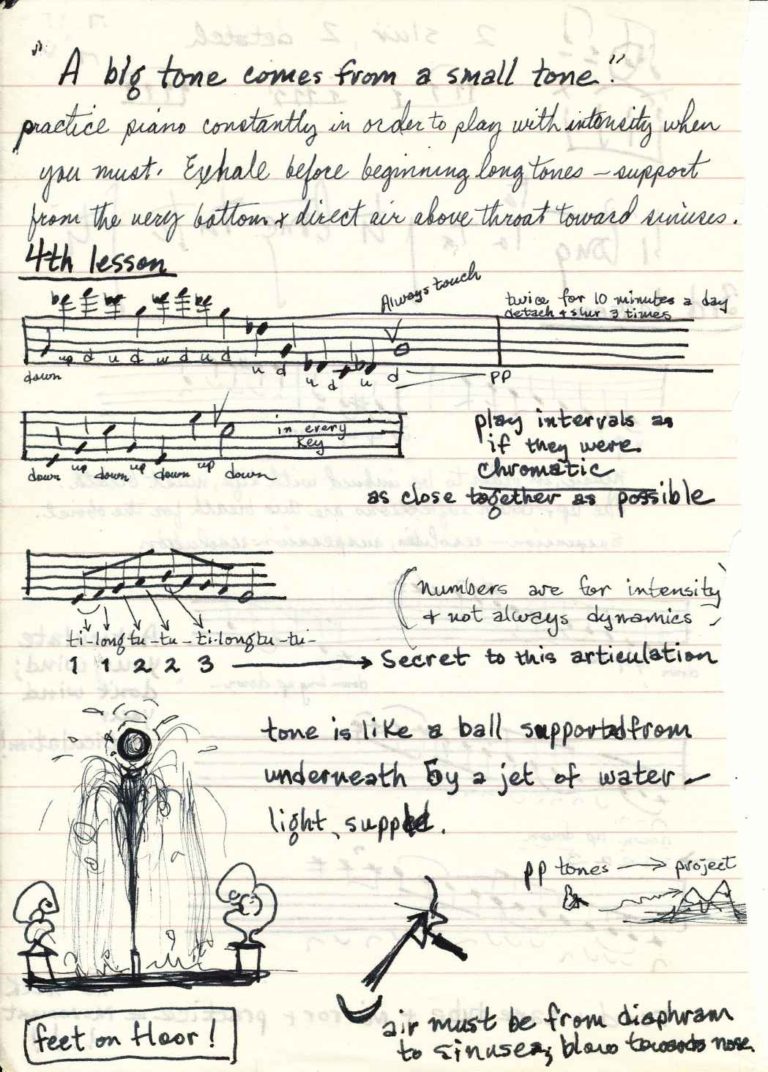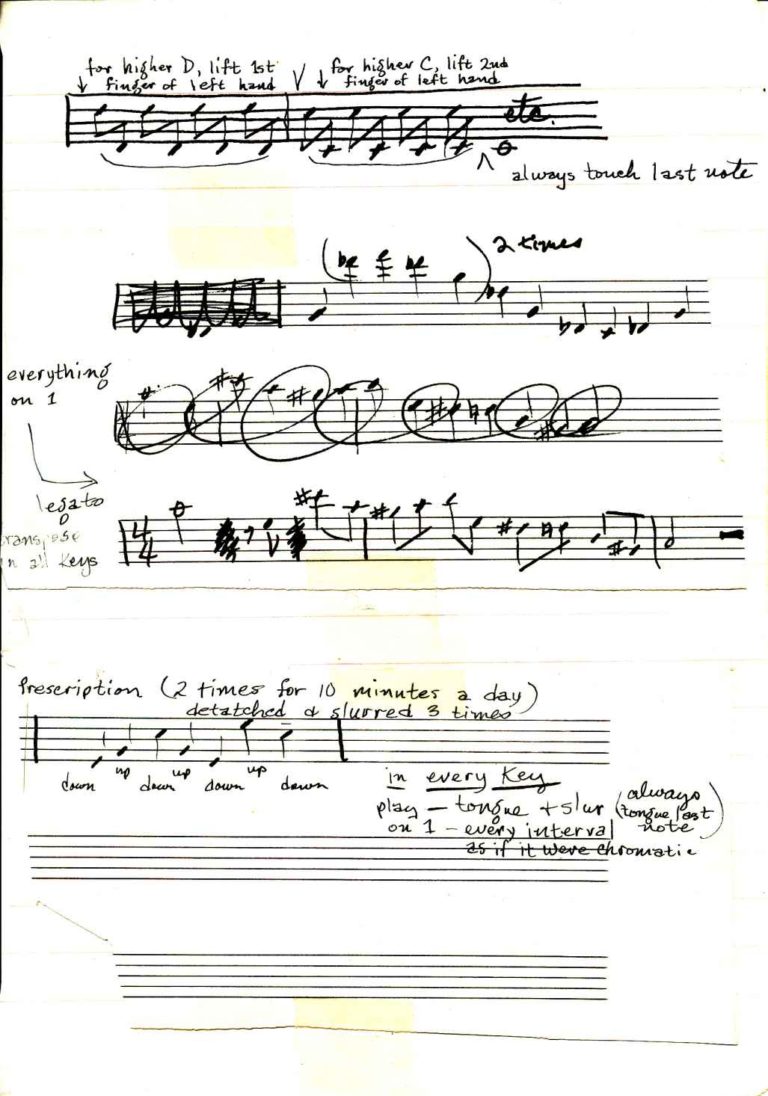While in Europe in 1963 on a Fulbright scholarship, Joseph Robinson drove down to Nice with a colleague in March to meet Marcel Tabuteau. They were invited to dinner, and the next day went off on a ‘cane hunting expedition.’ When they returned, and upon Joe’s request, Tabuteau agreed to teach him during the coming summer. The young oboist returned in July for five weeks of intensive lessons, one each week, that revolutionized his thinking about playing the oboe and of music in general. Robinson went on to become first oboist in the Atlanta Symphony, principal oboist of the New York Philharmonic, and department chair for Oboe Studies at the Manhattan School of Music. Below are scans of the actual notes that Joe took at his lessons with Marcel Tabuteau:
Hi Joe:
In reading the notes from your Tabuteau lessons, I noted that the final page has the following maxim written in German:
“Vor dunklen Vokalen wird c wie k ausgesprochen, & vor hellen wie s – “
that is:
“Preceding dark vowels, C turns out to be pronounced like a K, but preceding light vowels, C is pronounced like an S.” [Concentrated tone :: Ton concentré]
To what does this refer? To be sure we do have both light and dark ‘vowels’ on the oboe! And our tonguing Ta and Ti is somewhat analogous to the singer’s initiation of a consonant.
I ask because the maxim is followed by eighth-notes in 1-3 and 3-1 articulations preceding to a series of 4 eighths under a slur, indicating down-up-up-up | down.
If you have a moment, would you please elucidate for Marc and me in order that we might have this info for the Tabuteau website.
Thanks,
Chick
****
Dear Chick,
Honestly, I have no idea!
Since my head was still full of German, I may have just translated something Tab said spontaneously; but fifty-five years later, it sounds like nonsense!
Thanks for asking….
Best wishes,
Joe
****
More on Joseph Robinson


